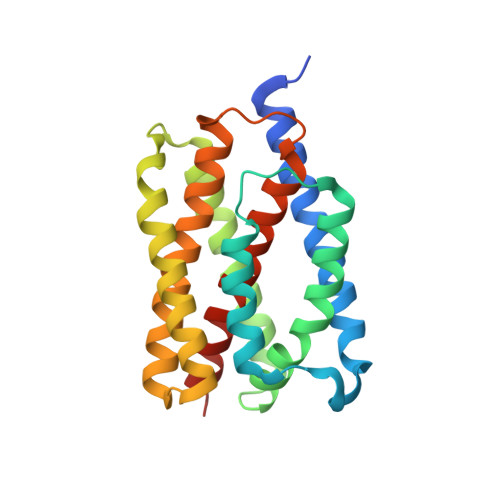Structural basis for a pH-sensitive calcium leak across membranes.
Chang, Y., Bruni, R., Kloss, B., Assur, Z., Kloppmann, E., Rost, B., Hendrickson, W.A., Liu, Q.(2014) Science 344: 1131-1135
- PubMed: 24904158
- DOI: https://doi.org/10.1126/science.1252043
- Primary Citation of Related Structures:
4PGR, 4PGS, 4PGU, 4PGV, 4PGW - PubMed Abstract:
Calcium homeostasis balances passive calcium leak and active calcium uptake. Human Bax inhibitor-1 (hBI-1) is an antiapoptotic protein that mediates a calcium leak and is representative of a highly conserved and widely distributed family, the transmembrane Bax inhibitor motif (TMBIM) proteins. Here, we present crystal structures of a bacterial homolog and characterize its calcium leak activity. The structure has a seven-transmembrane-helix fold that features two triple-helix sandwiches wrapped around a central C-terminal helix. Structures obtained in closed and open conformations are reversibly interconvertible by change of pH. A hydrogen-bonded, pKa (where Ka is the acid dissociation constant)-perturbed pair of conserved aspartate residues explains the pH dependence of this transition, and biochemical studies show that pH regulates calcium influx in proteoliposomes. Homology models for hBI-1 provide insights into TMBIM-mediated calcium leak and cytoprotective activity.
- New York Consortium on Membrane Protein Structure, New York Structural Biology Center, New York, NY 10027, USA.
Organizational Affiliation:
















